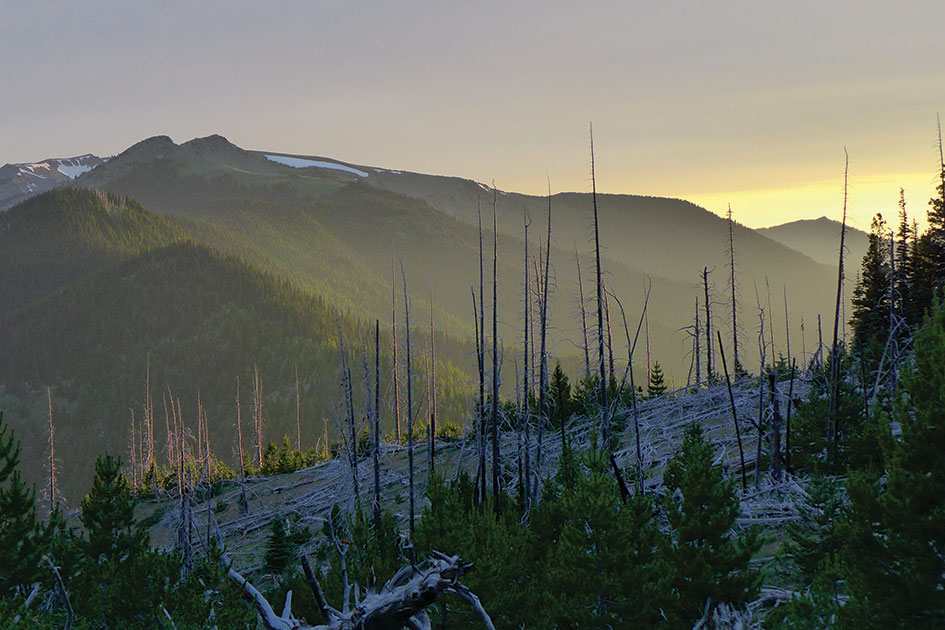Natural History of the Pacific Northwest Mountains
A classic guide by Daniel Mathews ’70 is an essential hiker's companion.
I’m still carrying around my original 1988 copy of Daniel Mathews’s Cascade-Olympic Natural History, dog-eared and worn, but completely functional. As readers of this magazine may recall, an old Reed boyfriend gave me the book, sealing my love for both him and the mountains of the Pacific Northwest. The boyfriend has long since drifted out of my life, but the book, and my love for the mountains, remain.
Now Daniel has come out with an updated third edition of his guidebook. Renamed Natural History of the Pacific Northwest Mountains, because he includes the Vancouver Island Ranges and the Coast Mountains of British Columbia, it’s the perfect trailside reference for a new generation.
Daniel packs an impressive amount of information into just over 500 pages, covering plants, animals, fungi, geology, and climate. Although it is still relatively lightweight (2 lb., 3 oz.) for a work of its depth and breadth, changes to the new edition include an extensive list of recommended websites, color tabs to make finding different sections easier, a discussion of the pros and cons of traditional Linnaean taxonomy, and, of course, information on how global climate change is likely to affect the region.
The most obvious change, one that I love, is that photos and text now appear alongside each other, replacing the bank of about 400 color plates located in two sections of the original. No more turning from picture to text to figure out if I’m looking at sickletop or birdbeak lousewort, hairy arnica or arrowleaf groundsel. The pages are also thick and glossy, compared to the lighter-weight pages of the older edition (which I rather liked, as they remind me of the scritta paper used in bibles).
Anecdotes about various giants of Pacific Northwest natural history are a welcome holdover from the first edition, and are a feature that sets this book apart from its few counterparts. Anyone new to the area (and there are so many these days!) must acquaint themselves with David Douglas and Archibald Menzies, for whom the Douglas fir tree (Pseudotsuga menziesii) is named, not to mention Thomas Nuttall, John Kirk Townsend, and Franz Karl Mertens, whose names grace a multitude of Northwest flora and fauna. Daniel covers them all.
It is Daniel’s intimacy with his subject, however, along with his keen knowledge of facts, figures, and folklore, that make his work unique. Nowhere else have I found Native American stories about Coyote the Trickster, information on how to prepare the edible thistle, and a discussion of why amphibians are in decline worldwide all between the covers of a single volume.
Now that I have two copies of Daniel’s book, I should really pass one on to my daughter, a student at Western Washington University, in the shadow of Mt. Baker and close to several other mountain ranges, but I’m loath to part with either. I’ll have to get Sadie her own copy of this essential guide, so that she too can explore our majestic mountains with Daniel at her side.
Tags: Alumni, Books, Film, Music, Climate, Sustainability, Environmental, Sports & Adventures
